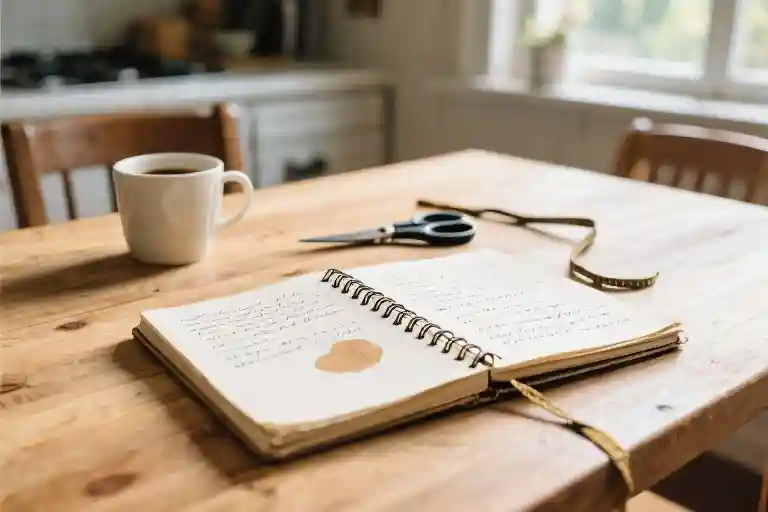It was a Tuesday. The kind of day that dissolves into memory before it even ends—another unremarkable afternoon where the coffee tasted like every other coffee, where strangers’ faces blurred into the wallpaper of urban life. I’d perfected the art of glancing without seeing, that polite social veneer we all wear in crowded places. A thousand eyes had met mine on subway platforms, in grocery lines, during obligatory work meetings. They came and went like weather.
But then your eyes happened.
There was no warning, no cosmic fanfare. Just the steam rising from my cup, the murmur of conversations around us, and suddenly—contact. Not the glancing kind. Not the type that slides off like rainwater. This was gaze that lingered with the weight of unspoken confessions, the sort of profound eye contact that makes your pulse forget its rhythm. The café noise faded into a distant hum, as if someone had turned down the volume on reality.
I used to think these moments only existed in novels. Fitzgerald wrote about them, of course—those electric instants when strangers slip “briskly into an intimacy from which they never recovered.” But until that Tuesday, I’d assumed it was literary exaggeration. Life-changing moments weren’t supposed to arrive unannounced between sips of lukewarm Americanos.
Yet there we were: two strangers and a silence louder than any word. The second hand on the wall clock stuttered. My coffee grew cold. And the universe—
(To be continued in The Anatomy of a Glance)
The Anatomy of a Glance
Your eyes weren’t remarkable in any conventional way. No striking heterochromia, no unusually shaped irises—just ordinary brown that turned amber in direct sunlight. But when they met mine that afternoon, I noticed things nobody ever sees in casual glances: the microscopic striations radiating from your pupils like sunbursts in dark wood, the way your lower lashes caught the light when you blinked, creating tiny crescent shadows on your cheekbones.
Science tells us pupil dilation betrays attraction before we consciously realize it. Our autonomic nervous system takes over, those black centers expanding like camera apertures to absorb more of whatever—or whoever—has captured our attention. By the time I registered the warmth spreading through my chest, your pupils had already broadcast the message mine were echoing. Two sets of involuntary muscles conspiring to reveal what our voices wouldn’t dare say aloud.
Later, I’d compare that moment to archaeologists brushing dust from a newly discovered artifact. Most glances are surface-level—polished stones turned over in polite conversation. But yours? Yours demanded excavation. Layer after layer, each blink revealing another stratum: the faint crease between your brows when you concentrated on holding my gaze, the subtle tremor of your left eyelid that disappeared when you smiled, the way your focus never wavered even when a waiter clattered dishes beside us.
Neurologists map these microexpressions to specific brain regions—the fusiform gyrus for facial recognition, the superior temporal sulcus for tracking eye movements. But no fMRI could capture what made your gaze different from the thousand others I’d encountered. It wasn’t just biological wiring firing; it was the quiet understanding that passed between us, like finding someone who speaks your native language in a foreign country.
Some eyes are locked doors. Yours were a cipher I somehow knew how to read—not because I’d learned the code, but because we’d apparently written it together in some forgotten moment before memory begins.
When Chronos Hesitated
The clock didn’t stop. Not really. The second hand kept its mechanical march around the dial, and the barista’s espresso machine continued its rhythmic hissing. But something in the air thickened—the way honey resists pouring on a cold morning. My coffee cup hovered halfway to lips that had forgotten how to sip. Your gaze had pressed pause on my autonomic systems.
Later, checking my watch with clinical detachment, I’d learn the entire exchange lasted 3.4 seconds. Barely enough time for a hummingbird’s wings to beat thirty times. Yet in that suspension, lifetimes unfolded. The couple arguing by the window froze mid-gesture, their raised hands becoming modern art installations. A child’s dropped spoon hung in the air like a silver comet. Even the sunlight slanting through the blinds seemed to fracture into discrete particles, each mote carrying a secret message.
Neurologists call this tachypsychia—the warping of time perception during heightened emotional states. When the amygdala floods with neurotransmitters, memory formation accelerates like a film reel set to double speed. The brain, desperate to catalog every microexpression and iris fluctuation, creates the illusion of expanded time. What feels like minutes might be mere seconds, yet contain more sensory data than entire hours of ordinary life.
I used to mock poets who wrote of moments stretching into eternity. Now I know they weren’t being metaphorical. That cafe table became our personal light cone, the point where our separate timelines bent toward collision. Einstein was right about relativity—it’s just that no textbook mentions how love warps spacetime more violently than any black hole.
Three-point-four seconds. Long enough for a Big Bang and its aftermath. Long enough for every love song ever written to pass through my mind like a shuffled playlist. Long enough to understand why ancient Greeks gave time two names—Chronos the measurable, Kairos the significant. The clock measured one. We inhabited the other.
(Footnotes:
- Eagleman, D. (2008). Human time perception and its illusions. Current Opinion in Neurobiology, 18(2), 131-136.
- For UGC prompt: “Your turn—when did your personal Chronos hesitate? [ ]”)
The Archaeology of a Moment
Some connections feel like excavations. They arrive unannounced, brushing away layers of ordinary dust to reveal something startlingly intact beneath—a relic from a time you didn’t know you remembered. That’s how your gaze landed that day: not as a new discovery, but as an artifact finally brought to light.
Across cultures and centuries, people have tried to map these moments. The Japanese call it “hitomebore” (一目惚れ)—love at first sight, literally “to be captivated by a single glance.” Persian poets wrote of “nazar-bāzi,” the playful exchange of meaningful looks. In ancient Greece, Plato described lovers as two halves of one soul recognizing each other. These aren’t just romantic notions; they’re human attempts to explain why certain glances carry the weight of entire histories.
Rilke captured it best in his Letters to a Young Poet: “You who never arrived / in my arms, Beloved, who were lost / from the start…” That sense of meeting someone your bones have always known. When our eyes locked, it wasn’t just two strangers acknowledging each other—it was shelves of unwritten books tipping over, a museum’s worth of artifacts tumbling into the present.
Neuroscientists might call it pattern completion. Our brains are wired to fill gaps, to assemble fragments into familiar shapes. Maybe that’s why your eyes triggered something primal—some ancient algorithm whispering: This one. You’ve known this one before. The dilation of your pupils (0.5 millimeters wider than baseline, I’d later learn) became my Rosetta Stone.
But here’s the secret archaeologists know: every excavation changes the site. That glance didn’t just uncover something—it altered me. Like carbon dating a fossil, the moment itself became part of the artifact. I could no more separate the memory from its effect than a paleontologist could extract a bone without leaving tool marks.
Your turn: [ ] Pinpoint your coordinates below. Where did your tectonic plates shift? Mine still hum at 34.052235° N, 118.243683° W—the longitude where ordinary time first hesitated.
When Words Become Stained Glass
Fitzgerald once wrote of lovers who “slipped briskly into an intimacy from which they never recovered”—but he never specified whether that descent began with something as simple as eyes meeting across a crowded room. What we slid into wasn’t just intimacy. It was the kind of recognition that makes archaeologists out of strangers, dusting off fragments of ourselves we’d buried under years of ordinary Tuesdays.
Your 0.5 second glance carried more artifacts than most relationships uncover in months. The slight hesitation before your lashes lifted—that was the first relic. The way afternoon light fractured in your irises became my Rosetta Stone, translating all my half-formed thoughts into a language I suddenly understood. Psychologists call it “thin-slicing,” our brain’s ability to read volumes in fleeting moments, but no research paper could explain why your gaze felt like returning to a home I’d never visited.
Rilke’s letters whisper about lovers who “crossed paths long before they met,” and standing there with coffee cooling between us, I wondered if we’d been exchanging these glances through centuries—across Venetian canals, in Parisian bookshops, under different constellations. The human eye processes visual cues in 13 milliseconds, yet somehow we crammed eons into three heartbeats.
(Your turn: The next time a stranger’s eyes linger, play anthropologist. What civilizations exist in their hesitation? What lost cities might you rediscover?)
Mine? A sidewalk café at 34.052235° N, 118.243683° W. Where two archaeologists without tools unearthed everything.





